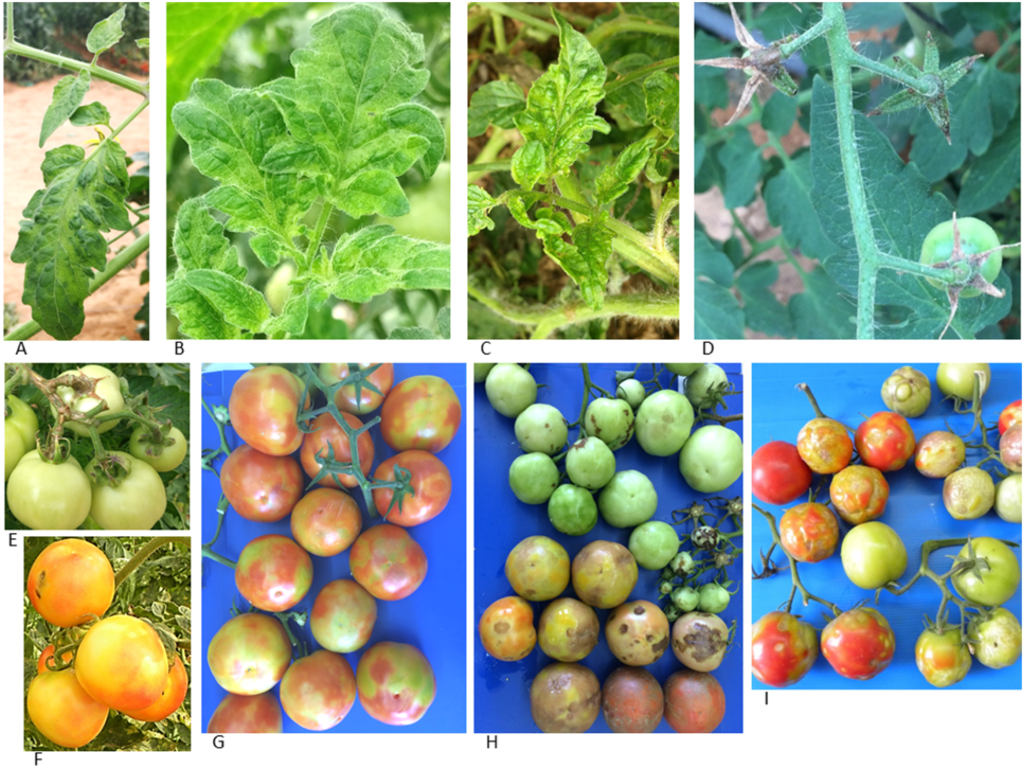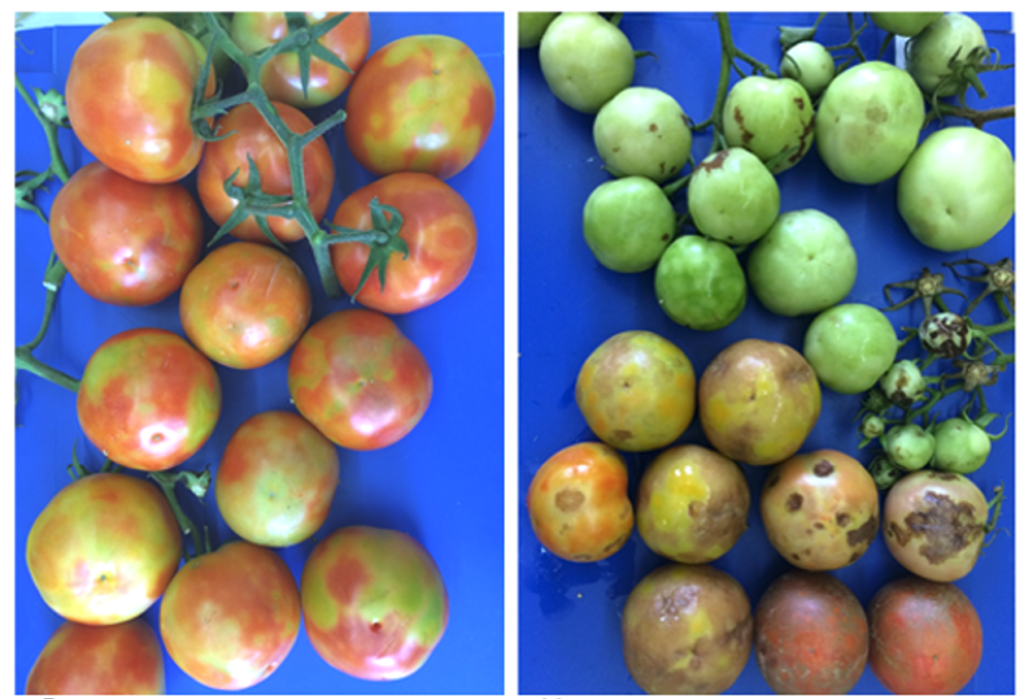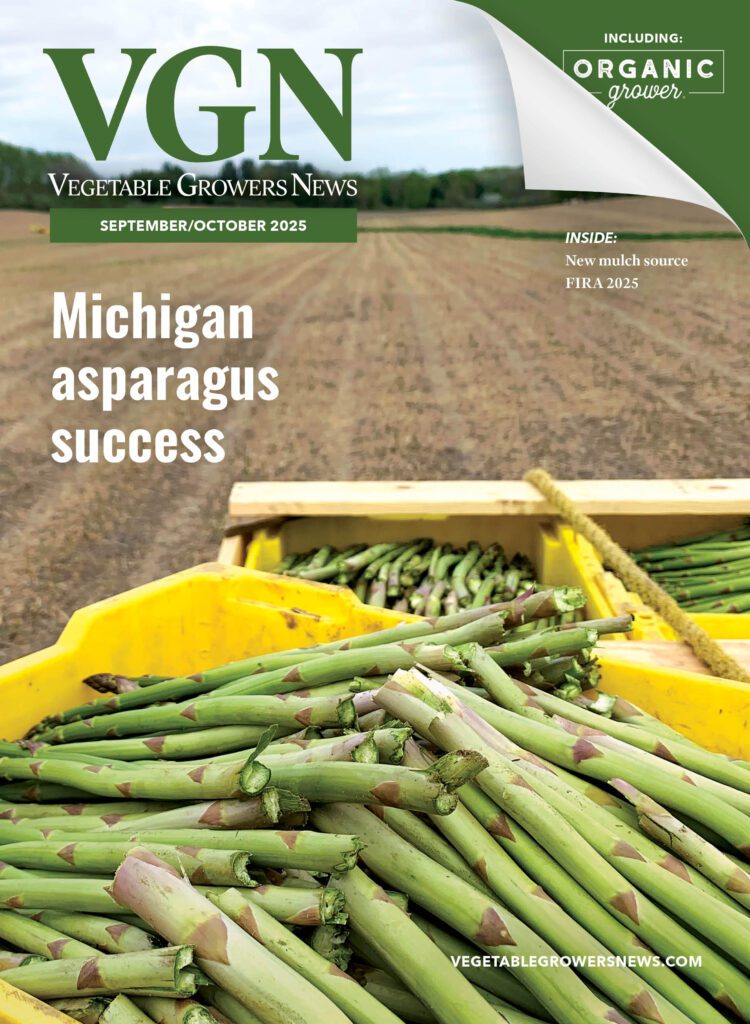Nov 20, 2019Tomato brown rugose fruit virus concerns growers
Growers and officials across the country are watching produce aisles for imported tomatoes with tomato brown rugose fruit virus, or ToBRFV, which they say could disrupt domestic growers of tomatoes and peppers.
Although tomato seeds or plants can contract the virus at any stage, the symptoms often are not displayed until the tomato turns red, said Michigan State University Extension Educator Ron Goldy. The virus was first reported to be in tomatoes in Israel in 2013.
“It’s fairly new, and has moved around since then,” he said.
Many tomatoes are shipped green, and even many vine-ripened tomatoes are not shipped fully red, so it’s possible for the virus to go undetected until reaching grocery stores, he said. While the virus isn’t harmful to people, visibly blotchy fruit are unmarketable.
“It could be a real problem, and we don’t need another problem,” Goldy said. “It’s one more thing in an industry that doesn’t have a big profit margin to begin with.”
Growers from sea to sea have some degree of concern. The Florida Department of Agriculture and Consumer Services in early October reported they had recently identified the virus in packaged, Mexico-grown tomatoes. Florida officials found infected tomatoes in Naples and Gainsville and destroyed them. University of California, Davis plant pathologist Bob Gilbertson recently spoke to open-field tomato growers about the virus.

Fred Leitz, a vine-ripened tomato grower near Sodus in southwest Michigan, saw a blotchy tomato at a store that recently, and he contacted Goldy.
“If a grower sees it (ToBRFV) in Michigan, he needs to buy it and get it to Michigan State so they can test it,” Leitz said.
USDA Animal and Plant Health Inspection Service (APHIS) said it will restrict tomato and pepper imports that could be carrying ToBRFV. The temporary measure will begin Nov. 22, 2019.
“APHIS will require tomato and pepper fruit imported from Mexico, Israel and the Netherlands (countries approved to export tomatoes where ToBRFV is present) to be inspected at the point of origin to ensure it is free of disease symptoms,” according to APHIS’ order. “Because Canada imports tomato and pepper fruit from Mexico that are re-exported to this country, APHIS will also require tomato and pepper fruit from Canada to be inspected at the point of origin to ensure it is free of disease symptoms. In addition, U.S. Customs and Border Protection will increase inspections at U.S. ports of entry to ensure imported tomato and pepper fruit entering from Mexico, Israel, the Netherlands and Canada do not show any signs of disease upon arrival.”
The virus is spread by seed as well as by physical contact, Goldy said. He’s most concerned about the infection cropping up at an industry “bottleneck,” such as batch of seeds or a greenhouse growing tomato plants for transplant, that would affect many growers at once. Unfortunately, it’s thought to be a “stable” virus, meaning it could live on in the ground for quite some time after infected plants are destroyed.
If infection of the virus occurs, Goldy said, control would be similar to how growers currently deal with tobacco mosaic virus or tomato spotted wilt. Sanitation practices for field workers, greenhouses and equipment can help contain its spread.
“We have the tools and knowledge as to how to handle it,” he said.
APHIS has posted a web page that includes information on the Federal Order, frequently asked questions and industry certification guidance. The page will be updated and information added to the page as necessary. Visit the web page here: https://www.aphis.usda.gov/planthealth/tobrfv
– Stephen Kloosterman, VGN associate editor


















